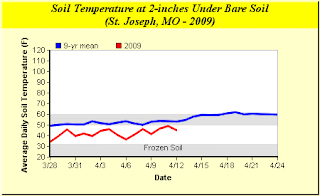Today I left the farm to help the Parker’s out with a chicken house improvement project. Tom recently broke his collarbone and has a brace on his shoulder until it heals (couple months.) If you are interested in helping out, give them a call at 816-470-3276. With the help of Tom’s friend and professional welder Shan, we built a new sled for their chicken coop out of heavy duty pipe. We then, with the help of leverage and an ATV, took off the old rotted wood sled, raised the coop, pulled the new sled under it, dropped it and welded it in place. It was a full day’s work.
While I don’t have any photos of it, I do have some taken before my batteries ran out.

Heading out to move the sheep.

The sheep

The chicken coop
Bok Choi
New to some, familiar to others, bok choi is good many ways. You can pick the leaves off the stems and use them salads. Using Asian type or sesame oil based dressings are particularly good with it. The stems are what give crunchiness to a good stir fry. It’s also good as a snack with peanut butter.
Mint
We are finding that cool wet weather is an ideal condition for mint. In the field and out home garden, it is growing well, and as aromatic as ever. We need to clear cut it now, to harvest what we have, and to create room for new growth.
It is forgotten how popular mint was before the birth of artificial flavors. As an herb, it has true medicinal properties. Before the turn of the century there were peppermint oil factories in the towns around Rochester, New York where I used to live. Dr. Chases Receipts, or Information for Everybody from 1886 notes in their section Food for the Sick, “47. Mint Teas, From the dried or green leaves crushed, with a little sugar, are agreeable to the taste, and soothing to a nauseous stomach, and to the irritated bowels of children.” With firsthand knowledge we can say that it works better than anything else to sooth an upset stomach.
Great Recipes from Member Bloggers
There are two great blogs out there sharing wonderful recipes to try with your share, complete with step by step instruction. Check out Emily Akins blog for Lemon Orzo with Roasted Asparagus.
The second one is by our friend and chef Heather Hands. She was at the farm last week and shared her lettuce wrap recipe. It was wonderful. Her blog is The CSA Chef.
 We are pleased that this week’s share has a little more substance than last week. The early rains and cold weather set some things back, but the fields now appear ready to start producing. Preparing this week’s mix doesn’t require too much coaching, except for maybe the greens.
We are pleased that this week’s share has a little more substance than last week. The early rains and cold weather set some things back, but the fields now appear ready to start producing. Preparing this week’s mix doesn’t require too much coaching, except for maybe the greens. We are pleased that this week’s share has a little more substance than last week. The early rains and cold weather set some things back, but the fields now appear ready to start producing. Preparing this week’s mix doesn’t require too much coaching, except for maybe the greens.
We are pleased that this week’s share has a little more substance than last week. The early rains and cold weather set some things back, but the fields now appear ready to start producing. Preparing this week’s mix doesn’t require too much coaching, except for maybe the greens.

















